Editor’s Note: We’re highlighting content about racial healing in anticipation for the upcoming National Day of Racial Healing. This year, we’re illustrating how racial healing is already yielding transformative results across the U.S. and to inspire everyday people to work towards racial healing and racial equity in their community. This content was originally published on January 22, 2021.
Since the W.K. Kellogg Foundation (WKKF) launched Truth, Racial Healing & Transformation (TRHT) in 2016, 14 communities have implemented TRHT processes to address the historic and contemporary effects of racism. Some of their wisdom and lessons are offered in seven recently published knowledge briefs. Oronde Miller, a WKKF program officer leading the TRHT work, reflects on the collaborative work and how TRHT can guide and inspire transformation in other communities.
Q: Tell us a bit about the TRHT Framework. How do communities use it?
A: Hundreds of leaders developed the TRHT Framework as a guide for communities. It is grounded in a visioning process where people from all parts of the community explore what might be possible if we were freed from a hierarchy of human value based on race. Deliberate work in narrative change and racial healing anchor the framework, because before you do systems transformation work, you have to be intentional about the stories we hold and tell about how community conditions have come to be. You have to build enough trust and relationships so that everyone that has an interest in changing those conditions can participate in productive conversations about racism and how it impacts the systems you want to transform. In TRHT’s case, the framework identifies pillars or potential areas of transformation: separation, the law and the economy.
Take a Deeper Look at the TRHT Framework
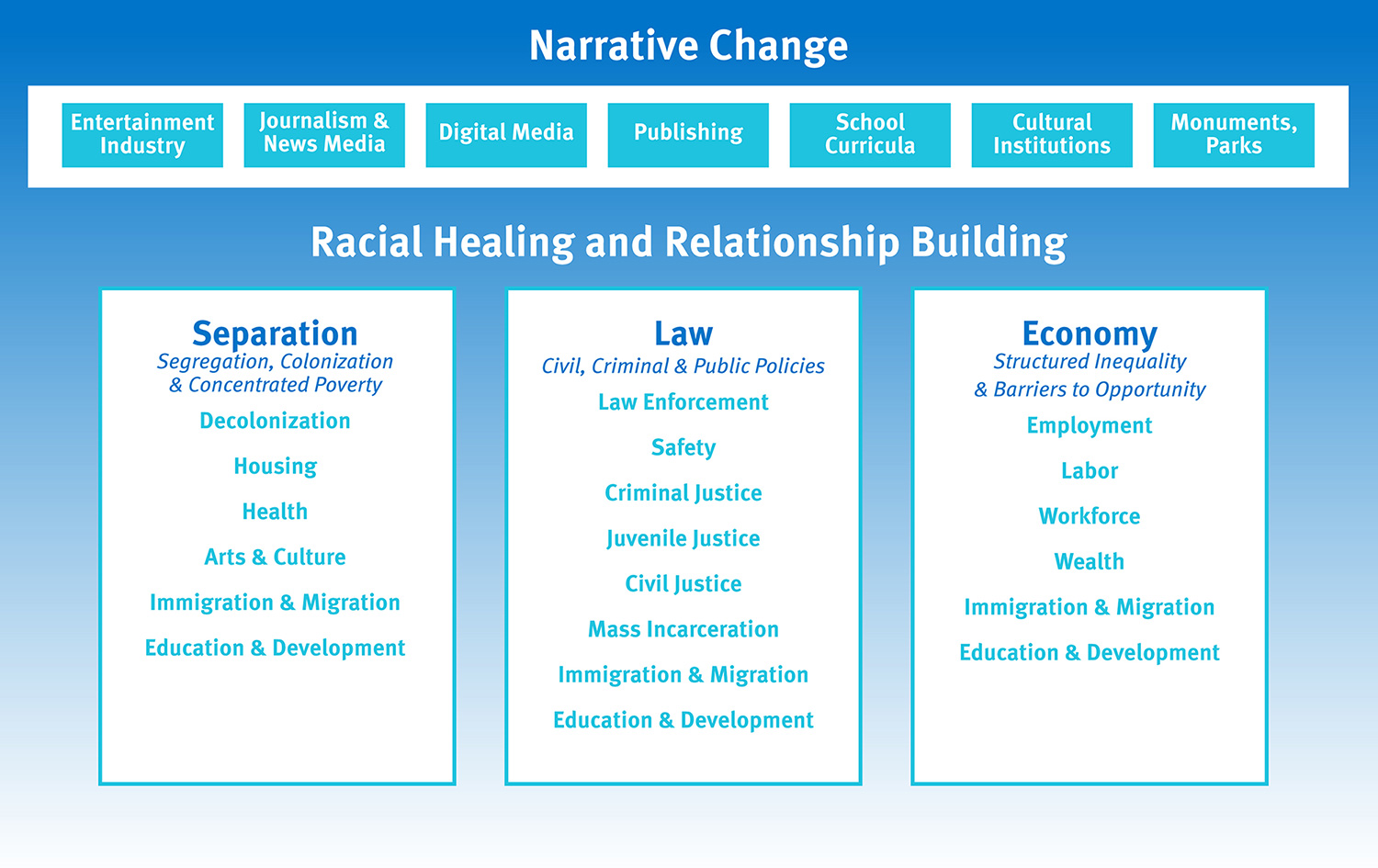
Q: How does TRHT transform communities? Can you share some examples?
A: An important thing about TRHT processes is that they help people who are working in different systems to be in conversation with community members who experience those systems. Community transformation happens across the three TRHT Framework pillars of separation: how the patterns of segregation and colonization influence education, jobs, housing or immigration; the law: how legal structures and policies impact access to resources or opportunity; and the economy: how inequality and barriers to economic opportunity affect how people are able to care for their families.
Great examples are in Buffalo, New York, where through community visioning and listening, they created a re-entry hub to support those returning to the community from prison. In Lansing, Michigan, where young people worked with the local prosecutor to uncover disparities and reduce inequities in investigations, plea deals and sentencing for young people of color ages 16-25. Or in Selma, Alabama, where they are ensuring that local procurement dollars are used locally to support emerging businesses owned by people of color and individuals with limited wealth. These are just a few examples and there are even more in the knowledge briefs.
Q: What does racial healing look like in a community? How does it relate to transformation?
A: Racial healing work is rooted in diverse cultural practices, including circles that bring diverse people together to discuss the impacts of race and racism on their lives. As a result, participants begin to see their counterparts in new ways, because the circle challenges their own assumptions. Community-wide racial healing brings people together across generations, across racial boundaries and across different systems and institutions. Some people may not know one another or, in some cases, had suspicions about one another. This is significant because from there you can start building the kind of trust necessary to do transformative work in partnership over a longer period.
For example, the TRHT in Selma, Alabama, held introductory meetings to identify people who had been doing community-based racial healing work. Eventually, they were able to apply their healing practices to new restorative justice work they were doing in the school district. In Flint, Michigan, racial healing practitioners trained a cross-section of community residents and organizers so that they could facilitate productive conversations about a contentious change in a neighborhood. In Kalamazoo, Michigan, we have seen how when leaders are trained in racial healing practices, they use those skills in community meetings to de-escalate tensions and keep people at the table long enough to reach agreement on more equitable public policies.
Q: What are communities doing to change narratives?
A: Narrative change work is about unpacking the stories that each of us tell ourselves and one another about race, racism and the conditions we experience each day. The stories are influenced by media, school curricula and the institutions all around us. First you identify the stories and figure out how they came to be. In doing so, we also challenge many assumptions we hold. Often, we realize that what we think we know is wrong or incomplete. That is when we can start learning and creating new narratives about what we know and seek to transform in a community.
Saint Paul, Minnesota, looked at the media landscape in public radio and realized that the stories they were reporting did not reflect the day-to-day experiences of the African American, Hmong, Latino, Native and Indigenous communities. Instead of sharing narratives about celebrations, academic accomplishments or community cooperation, they only reported on hardship and tragedies. They used their TRHT efforts to broaden the view and tell more comprehensive stories so that a range of joys and challenges were represented in media. In Buffalo, New York, young Black men developed a podcast to tell their own stories about what they experienced with law enforcement and in school. They never felt trusted and they always felt like they were being surveilled. The podcast also shared their joys and the beauty of their lives so that the Buffalo community could transform their policies, practices and services for them and their families. And, in Richmond, Virginia, they used the power of art and culture, enabling young people to draw, speak and perform to tell the stories of their lives and share a vision for Richmond that is free of oppression.
Q: What do you hope for TRHT going forward?
A: As TRHT work continues, we hope that communities continue to draw more people in. The work is more effective when leaders and community members share commitments to equity and justice. Yet, we need even more outreach to civic leaders that have not traditionally seen themselves as being part of a racial equity agenda. I also hope that we see more cross-racial, inter-generational and multi-sector coalitions as part of TRHT. In many cases, if communities did not have existing relationships with tribes and Native communities, those coalitions did not come to be. There must be intentional outreach and an opening up of the process to bring them in, too.
Q: What advice would you give to communities considering a TRHT process or something similar?
A: Start by finding out which people and organizations are actively doing similar work to TRHT in your community. Reach out to them to develop relationships and learn more. Who is already doing trust-building work? What advocates, leaders, community members or elected officials share your commitments to pursuing a TRHT? What philanthropic institutions exist in your community that might want to be involved or support this work? Engage them. Sometimes they are individuals and local faith institutions, too. Local support for the work matters! And, finally, take advantage of the following resources and wisdom, including the TRHT Implementation Guidebook; a publication on racial healing practices called “Restoring to Wholeness”; and the recent collection of knowledge briefs with all the lessons learned from TRHT communities themselves.
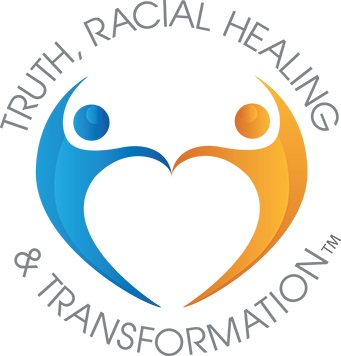
Launched in 2016 by WKKF, Truth, Racial Healing & Transformation (TRHT) is a comprehensive, national and community-based process to plan for and bring about transformational and sustainable change, and to address the historic and contemporary effects of racism. TRHT processes are active in at least 13 communities in the U.S., on college campuses and in libraries. Learn more at healourcommunities.org.

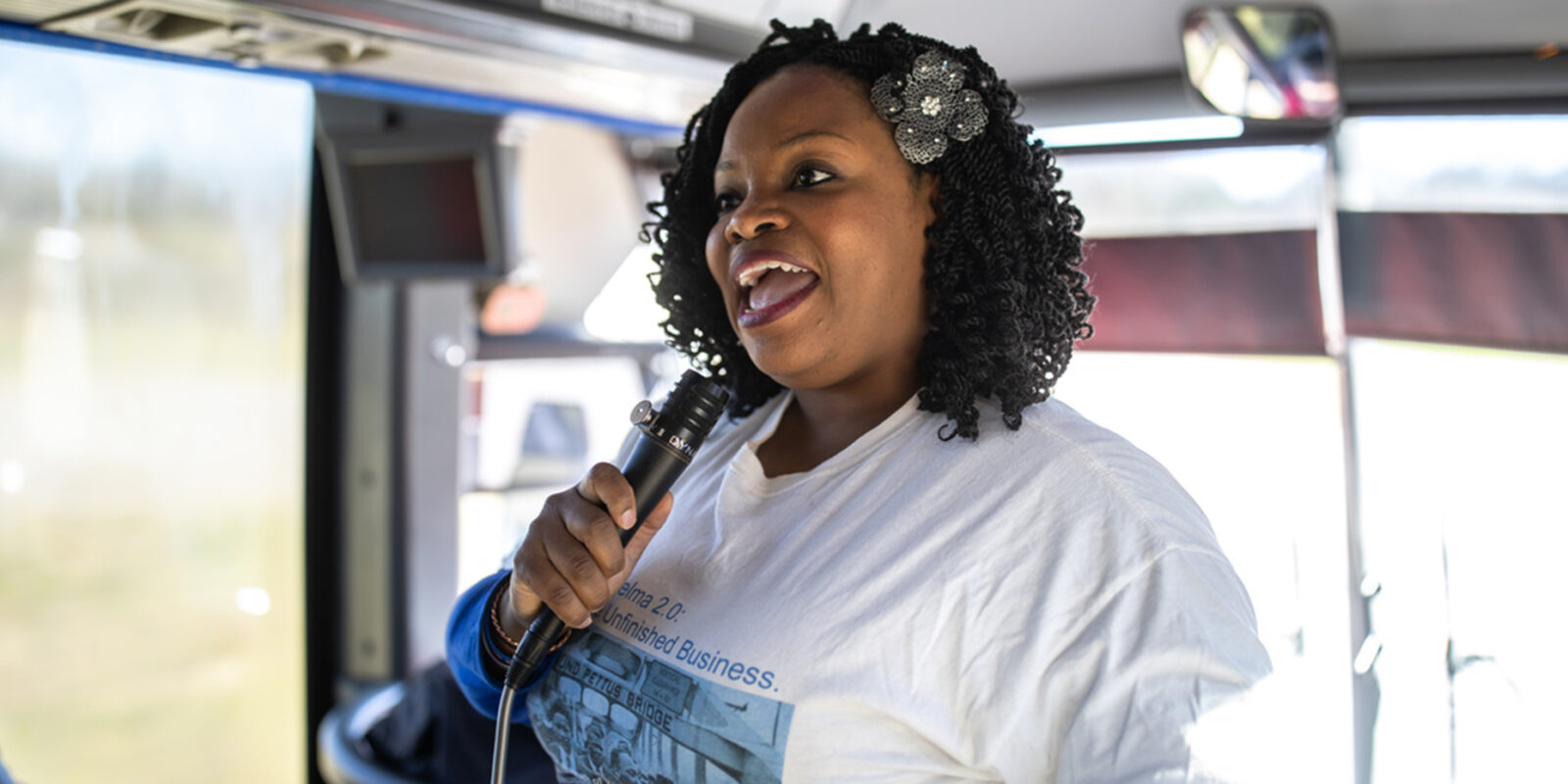
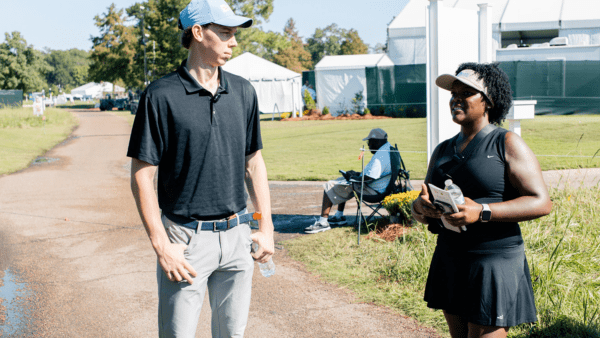
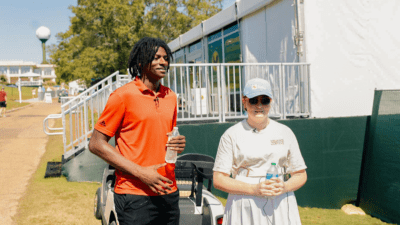
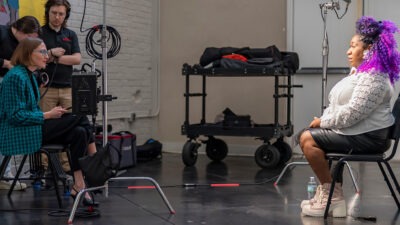
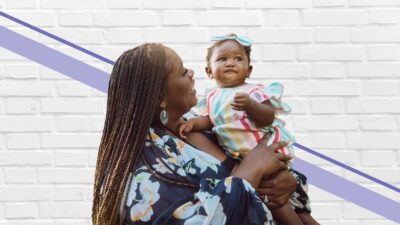
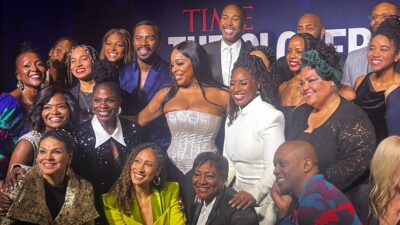

Comments